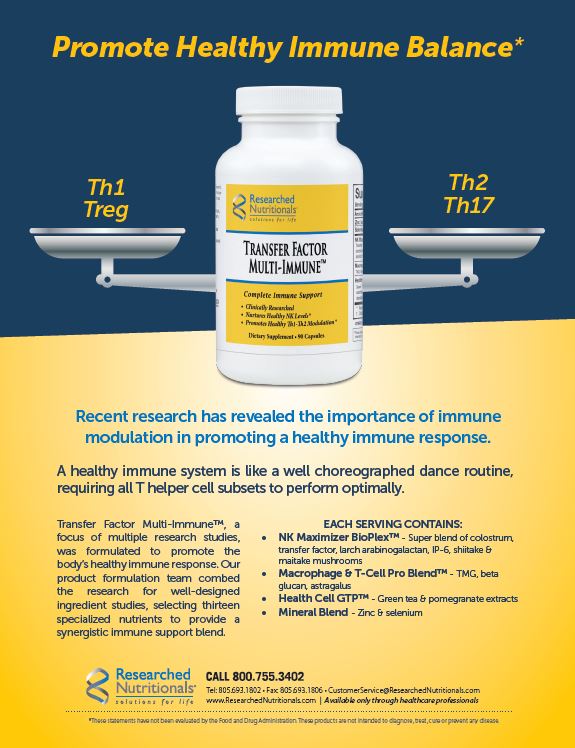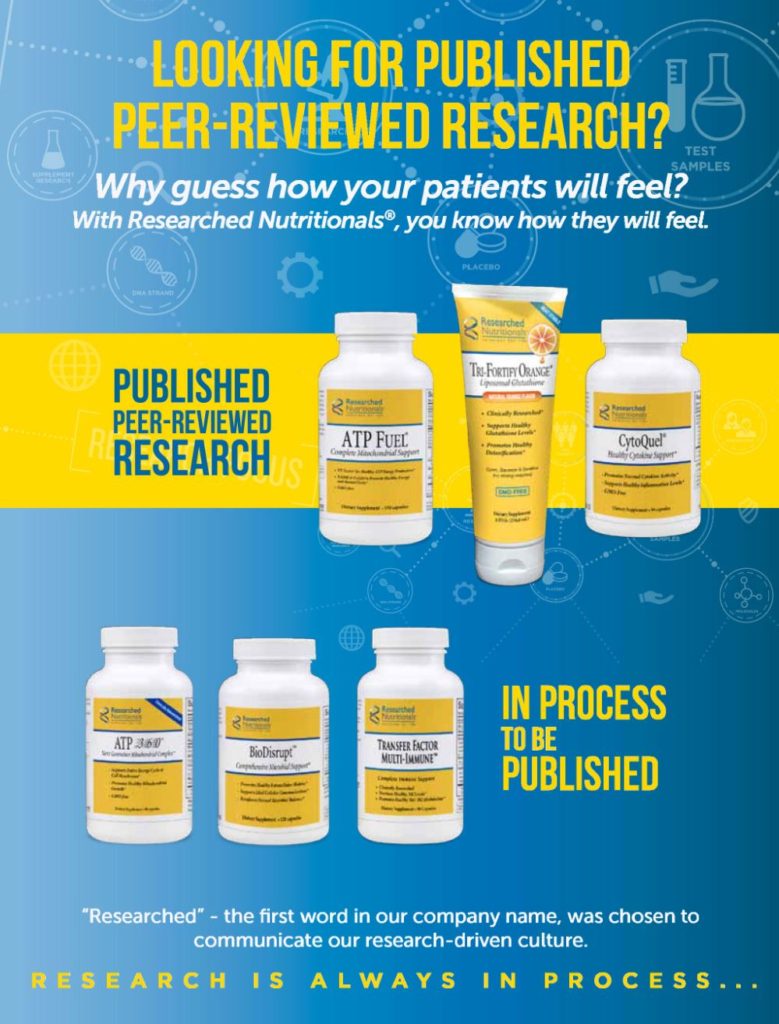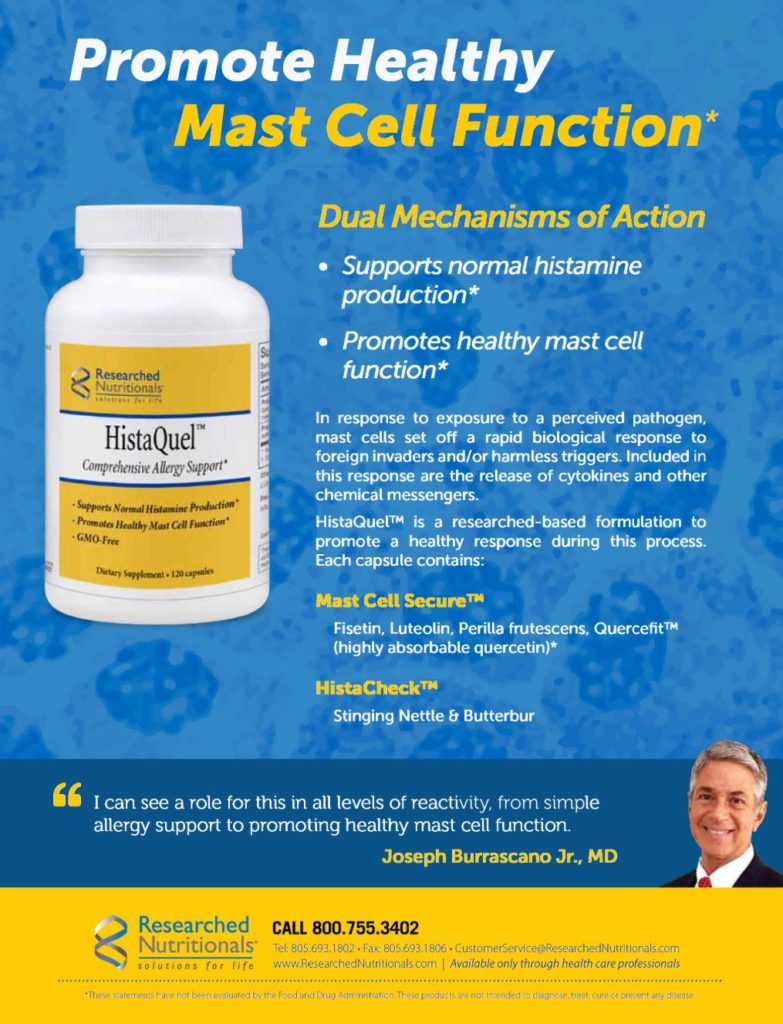By Carrie Decker, ND
We can all surmise to some extent the mechanisms by which oral intake of pancreatic glandular substances may impact digestion. As an organ that produces many digestive enzymes and their proenzyme (zymogen) precursors, it stands to reason that a minimally processed preparation of pancreatic tissue would also contain these substances and thereby positively impact digestion. Beyond this, however, there are many valid questions about how these substances can have activity in other remote regions of the body. The potential degradation by harsh gastric juices, absorption in the digestive tract, stability in the bloodstream, and mechanisms via which they interact with the cells in different tissues each are important issues to consider. In this piece, we look at these questions in full and present substantial research that supports the positive clinical outcomes many physicians have had in their work with pancreatic glandular substances.
Survival in the Gastric Environment
The potential for modification of a substance in the gastric environment is great and is a question not only for supplements but also food, drugs, and even toxic substances. A broad range of acidity exists in the upper portion of the digestive tract, as the pH can fluctuate from 1.5 to nearly 7 (in the case of achlorhydria) in the stomach and 2 to 6 in the duodenum.1
Further modification of substances can occur not only via the digestive secretions of the pancreas and gallbladder, but also by the diverse array of microbes that make up the microbiome. 2 Additionally, the detoxifying ability of the gut lining is significant, with many of the cytochrome p450 enzymes and other detoxification-related proteins being found at very high levels in the intestinal epithelium.3
Numerous scientists have investigated the impact environment has on pancreatic enzyme activity in attempts to better understand how these substances can be employed for both medicinal and industrial purposes. A series of experiments by Legg and Spencer in 19754 looked at the influence of pH and temperature on the stability of human-sourced pancreatic amylase, trypsin, and lipase in duodenal fluid. In the set of variable temperature experiments, it was shown that amylase activity at room temperature was 65% of its initial values after four weeks and trypsin activity was 20% at four weeks; however, very little activity of lipase remained at both room temperature and 4°C after just four days. In the series of variable pH experiments (with a citrate buffer as the pH altering agent), it was shown that trypsin retained a high level of activity at a pH of 5 to 8 (roughly equal to the initial values or higher), lipase had a similarly high level of activity from a pH of 6 to 8, and amylase had this high activity at a pH of 7 or 8. At the lower pH of 4, both trypsin and lipase had approximately 50% of their initial activity while amylase was no longer active. It was noted that in the pH experiments, time was not a factor, with the majority of the change occurring immediately and the activity being stable after that.
Although not all of these results suggest that a high level of enzyme activity will remain after being subject to the acidic environment of the stomach, further research in this realm does. Experiments have demonstrated both trypsin and α-chymotrypsin experience reversible denaturation at an acidic pH ranging from 1.0 to 3.0 and 2.0 to 2.5 respectively.5,6 Reversible conformational changes of porcine pancreatic elastase over a pH range from 2.6 to 4.15 have also been shown, suggesting similar patterns of this enzyme activity when the pH is altered.7
The work of Moskvichyov BV et al8 suggests that the reversible denaturation of trypsin has a complex temperature dependency. Although activity is lost with an increasing equilibrium temperature to a certain point, it is regained when temperature is further increased. Other studies specifically using porcine-sourced amylase suggest residual activity of 25% or greater remains at a pH of 4 with optimal function at a pH of 6.9 and temperature of 53° C. It has been reported that proteins like albumin and mucin, as well as calcium, increase amylase activity, protecting it from environments that otherwise would inactivate it.9,10
Absorption Through the Intestinal Mucosa
The intestinal epithelium has been shown to absorb various proteins, including digestive enzymes and their zymogens.11,12 Experimentally, chymotrypsinogen, trypsin, and amylase have each been shown to be transported through the intestinal epithelium.13,14,15 Much like the enterohepatic circulation of biliary acids in the digestive tract, it has been proposed that to some extent, enteropancreatic recycling of digestive enzymes also may exist.16,17
Just as free amino acids at the apical surface of enterocytes are absorbed by specific transporters, di- and tri-peptides also have a specific apical transporter.18 In addition to this, passive diffusion, paracellular transport, and endocytosis of peptides, the later which also allows for the transport of large proteins, are other processes via which peptides may be absorbed into the enterocyte. Although many of these apically absorbed proteins are degraded by cytosolic peptidases in the cell, a low level of efflux of peptides across the basolateral membrane into the hepatic portal vein has been shown.19
In addition to absorption by these processes in a normal, healthy organism, increased intestinal permeability may be an avenue via which absorption of large proteins like enzymes occurs. Hyperenzymemia without symptoms of pancreatitis has been shown to be more common in inflammatory bowel disease,20 a condition associated with increased intestinal permeability. Elevated serum levels of enzymes without symptomatology, a condition known as benign pancreatic hyperenzymemia or Gullo’s syndrome,21 also exists and has an unknown etiology. Positive findings from clinical studies using oral proteolytic enzymes therapies for the purpose of managing inflammation-associated pathology also support that these enzymes pass through the digestive tract and exert their effects in circulation.22,23
Fate in Circulation
Pancreatic proteins (proenzymes and active enzymes) in circulation have a variety of fates: some are taken up in the tissues (such as the kidney, liver, spleen, pancreas, and lung),15,24,25,26 some are excreted intact into the urine (which increases in the setting of albuminuria),27 and a small amount are excreted intact in the bile or pancreatic juice. Complexing of the enzymes or proenzymes with other proteins that act as enzyme inhibitors may be one means by which they remain in circulation, while complexing with albumin or calcium also may have a stabilizing effect.9,10,28,29 In the bloodstream, trypsin interacts with serine protease inhibitors (serpins) and other trypsin inhibitors such as alpha-1-antitrypsin. Research suggests that catalytic activity remains when trypsin is complexed with alpha-1-antitrypsin as well as when the complex dissociates.30 Clearance of these enzymes from circulation ranges from fast (with amylase having a half-life of roughly 90 minutes outside of pancreatitis) to relatively slow, with some having a half-life of roughly seven to 18 hours.26,31
Cellular Interactions of Proenzymes and Proteolytic Enzymes
Investigations into the effect of pancreatic glandular substances on malignancies goes back to the late 1800s and the work of John Beard, PhD, an embryologist, who had observed that developmentally, the trophoblast is much like a cancer. Its cells, sheltered from immune attack, invade and implant into the uterine lining, producing their own blood supply much like a malignancy does in tissues surrounding it. He discovered that at the same point the poorly differentiated tissue invading the uterus became the mature placenta, production of pancreatic enzymes begins to occur (confirmed by modern research).32,33 He wondered what caused these cells to essentially “behave”; and upon discovering the embryo production of the enzyme trypsin, he tested his theory by injecting trypsin (diluted in distilled water) into tumor-burdened mice and found their tumors regressed – results which were published in the British Medical Journal in 1906.34 Numerous physicians aware of his research began treating their human cancer patients under his direction, finding success that they also detailed in case study publications.35,36
Interest in this use of pancreatic enzymes has waxed and waned with time, with many doctors, such as the late Nicholas Gonzalez, MD, electing instead to use high oral doses of freeze-dried (lyophilized) pancreatic glandular substances prepared in a manner so the fatty content remained.37,38 Fat, it was suspected, contributed to a more stable product while in a water-containing environment the enzymes were prone to autodigestion. By using these whole freeze-dried glandular materials, in addition to the active enzyme fraction, the proenzymes and cofactors normally present in the tissue also remained.
In recent years, researchers have looked at the interactions that the compounds found in pancreatic glandular substances may have with receptors on the surface of cancer cells and trophoblasts. Protease activated receptors (PARs) have been shown to play a role in both tumor cell invasion and placenta growth and development.39,40 In cancer cells expressing certain PARs, trypsin actually may be pro-oncogenic,41,42 although other studies have shown it to have anti-metastasis, anti-motility, PAR-desensitizing, and pro-cellular differentiation effects.43,44
It also may be that the proenzymes or protease inhibitors found in pancreas glandular products are the substances having anti-oncogenic effects.45,46 Proenzymes have been shown to have angiostatic properties and selectively activate on cancer cells, enabling them to directly deliver their proteolytic action to the tumor cells.47 A combination of proenzymes with their active enzyme form (as found in a crude pancreatic extract) was shown to have a far more dramatic effect on survival than trypsinogen or amylase alone in a murine model of melanoma metastasis. In findings published as recently as 2017, proenzyme preparations have been shown to inhibit angiogenesis, tumor growth, and cancer cell migration and invasiveness as well as promote cell adhesion and differentiation in vitro, and to be well tolerated and effective clinically.48,49
Clearly, many questions remain unanswered as to the biological potential of pancreatic glandular preparations. That said, due to their high level of tolerability and the low incidence of adverse reactions, they continue to be used in difficult-to-treat conditions such as cancer.
References
- Ovesen L, et al. Intraluminal pH in the stomach, duodenum, and proximal jejunum in normal subjects and patients with exocrine pancreatic insufficiency. Gastroenterology. 1986 Apr;90(4):958-62.
- Cassidy A, Minihane AM. The role of metabolism (and the microbiome) in defining the clinical efficacy of dietary flavonoids. Am J Clin Nutr. 2017 Jan;105(1):10-22.
- von Richter O, et al. Cytochrome P450 3A4 and P-glycoprotein expression in human small intestinal enterocytes and hepatocytes: a comparative analysis in paired tissue specimens. Clin Pharmacol Ther. 2004 Mar;75(3):172-83.
- Legg EF, Spencer AM. Studies on the stability of pancreatic enzymes in duodenal fluid to storage temperature and pH. Clin Chim Acta. 1975 Dec 1;65(2):175-9.
- Pohl FM. Kinetics of reversible denaturation of trypsin in water and water–ethanol mixtures. Eur J Biochem. 1968 Dec;7(1):146-52.
- Pohl FM. [A simple temperature range method in the seconds to hours range and the reversible denaturation of chymotrypsin]. Eur J Biochem. 1968 Apr;4(3):373-7.
- Wasi S, Hofmann T. A pH-dependent conformational change in porcine elastase. Biochem J. 1968 Feb;106(4):926-7.
- Moskvichyov BV, et al. Study of trypsin thermodenaturation process. Enzyme Microbial Technol. 1986 Aug 1;8(8):498-502.
- Hao K, et al. Effects of albumin and other proteins during assay of amylase activity. Clin Chim Acta. 1977 Aug 15;79(1):75-80.
- Janecek S, Baláz S. Alpha-Amylases and approaches leading to their enhanced stability. FEBS Lett. 1992 Jun 8;304(1):1-3.
- Gardner ML, et al. Gastrointestinal absorption of intact proteins. Annu Rev Nutr. 1988;8:329-50.
- Miner-Williams WM, et al. Are intact peptides absorbed from the healthy gut in the adult human? Nutr Res Rev. 2014 Dec;27(2):308-29.
- Götze H, Rothman SS. Amylase transport across ileal epithelium in vitro. Biochim Biophys Acta. 1978 Sep 11;512(1):214-20.
- Heinrich HC, et al. Enteropancreatic circulation of trypsin in man. Klin Wochenschr. 1979 Dec 3;57(23):1295-7.
- Leibow C, Rothman SS. Enteropancreatic circulation of digestive enzymes. Science. 1975 Aug 8;189(4201):472-4.
- Rothman S, et al. Conservation of digestive enzymes. Physiol Rev. 2002 Jan;82(1):1-18.
- Lake-Bakaar G, et al. Metabolism of 125I-labelled trypsin in man: evidence of recirculation. Gut. 1980 Jul;21(7):580-6.
- Daniel H. Molecular and integrative physiology of intestinal peptide transport. Annu Rev Physiol. 2004;66:361-84.
- Brandsch M, Brandsch C. Intestinal transport of amino acids, peptides and proteins. In Progress in Research on Energy and Protein Metabolism. Wageningen Academic Publishers; 2003.
- Bokemeyer B. Asymptomatic elevation of serum lipase and amylase in conjunction with Crohn’s disease and ulcerative colitis. Zeitschrift fur Gastroenterologie. 2002;40(1):5–10.
- Gullo L. Benign pancreatic hyperenzymemia. Dig Liver Dis. 2007 Jul;39(7):698-702.
- Desser L, et al. Oral therapy with proteolytic enzymes decreases excessive TGF-beta levels in human blood. Cancer Chemother Pharmacol. 2001 Jul;47 Suppl:S10-5.
- Leipner J, et al. Therapy with proteolytic enzymes in rheumatic disorders. BioDrugs. 2001;15(12):779-89.
- Largman C, et al. Clearance and metabolism of circulating pancreatic proelastase in the rat. Am J Physiol. 1980 Dec;239(6):G504-10.
- Rohr G, Scheele G. Fate of radioactive exocrine pancreatic proteins injected into the blood circulation of the rat. Tissue uptake and transepithelial excretion. Gastroenterology. 1983 Nov;85(5):991-1002.
- Tietz NW, Shuey DF. Lipase in serum–the elusive enzyme: an overview. Clin Chem. 1993 May;39(5):746-56.
- Duane WC, et al. Distribution, turnover, and mechanism of renal excretion of amylase in the baboon. J Clin Invest. 1971 Jan;50(1):156-65.
- Borgström A, et al. Studies on immunoreactive pancreatic elastase 2 in human serum. Hoppe Seylers Z Physiol Chem. 1980 May;361(5):633-40.
- Geokas MC, et al. Molecular forms of immunoreactive pancreatic elastase in canine pancreatic and peripheral blood. Am J Physiol. 1980 Mar;238(3):G238-46.
- Cohen AB, et al. Interaction of human alpha-1-antitrypsin with porcine trypsin. Biochemistry. 1978 Feb 7;17(3):392-400.
- Largman C, et al. Clearance and metabolism of circulating pancreatic proelastase in the rat. Am J Physiol. 1980 Dec;239(6):G504-10.
- Beard J. The Enzyme Treatment of Cancer and Its Scientific Basis. London: Chatto and Windus; 1911.
- Terada T, Nakanuma Y. Expression of pancreatic enzymes (alpha-amylase, trypsinogen, and lipase) during human liver development and maturation. Gastroenterology. 1995;108(4):1236-1245.
- Beard J. The Action of Trypsin Upon The Living Cells of Jensen’s Mouse-Tumour: A Preliminary Note upon a Research made (with a Grant from the Carnegie Trust). Br Med J. 1906 Jan 20;1(2351):140-1.
- Campbell JT. Trypsin treatment of a case of malignant disease. JAMA. 1907;48(3):225-226.
- Cleaves MA. Pancreatic ferments in the treatment of cancer and their role in prophylaxis. Med Rec. 1906 Dec;70:918.
- Gonzalez NJ. The history of the enzyme treatment of cancer. Altern Ther Health Med. 2014 Oct;20 Suppl 2:30-44.
- Kelley WD. One Answer to Cancer. Los Angeles, CA: Cancer Book House; 1969.
- Grisaru-Granovsky S, et al. Protease activated receptor-1, PAR1, promotes placenta trophoblast invasion and beta-catenin stabilization. J Cell Physiol. 2009 Mar;218(3):512-21.
- Nag JK, Bar-Shavit R. Transcriptional Landscape of PARs in Epithelial Malignancies. Int J Mol Sci. 2018 Nov 2;19(11).
- Ohta T, et al. Protease-activated receptor-2 expression and the role of trypsin in cell proliferation in human pancreatic cancers. Int J Oncol. 2003 Jul;23(1):61-6.
- Darmoul D, et al. Initiation of human colon cancer cell proliferation by trypsin acting at protease-activated receptor-2. Br J Cancer. 2001 Sep 1;85(5):772-9.
- Elzer KL, et al. Differential effects of serine proteases on the migration of normal and tumor cells: implications for tumor microenvironment. Integr Cancer Ther. 2008 Dec;7(4):282-94.
- White MJ, et al. Trypsin potentiates human fibrocyte differentiation. PLoS One. 2013 Aug 7;8(8):e70795.
- Greene LJ, et al. Human pancreatic secretory trypsin inhibitor. Methods in Enzymology 1976 Jan 1 (Vol. 45, pp. 813-825). Academic Press.
- Rakash S, et al. Role of proteases in cancer: A review. Biotech Molec Biol Rev. 2012 Oct 31;7(4):90-101.
- Novak JF, Trnka F. Proenzyme therapy of cancer. Anticancer Res. 2005 Mar-Apr;25(2A):1157-77.
- Perán M, et al. A formulation of pancreatic pro-enzymes provides potent anti-tumour efficacy: a pilot study focused on pancreatic and ovarian cancer. Sci Rep. 2017 Oct 25;7(1):13998.
- Perán M, et al. In vitro treatment of carcinoma cell lines with pancreatic (pro)enzymes suppresses the EMT programme and promotes cell differentiation. Cell Oncol. 2013 Jul;36(4):289-301.

Dr. Carrie Decker graduated with honors from the National College of Natural Medicine (now the National University of Natural Medicine) in Portland, Oregon. Prior to becoming a naturopathic physician, Dr. Decker was an engineer and obtained graduate degrees in biomedical and mechanical engineering from the University of Wisconsin-Madison and University of Illinois at Urbana-Champaign respectively. Dr. Decker continues to enjoy academic research and writing and uses these skills to support integrative medicine education as a writer and contributor to various resources. Dr. Decker supports Allergy Research Group as a member of their education and product development team.









